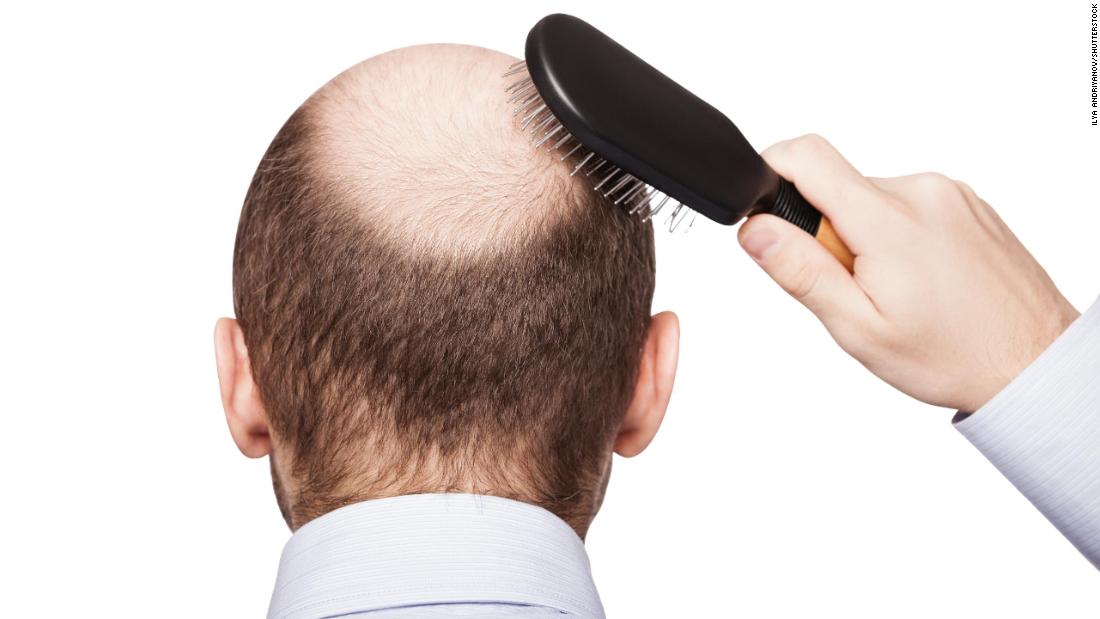Congresswoman Ayanna Pressley reveals she has alopecia 1:29
(CNN Spanish) --
Hair loss may not be serious, if it is a few hundred hairs a day, which, according to the United States National Library of Medicine, normally grow back.
But excessive hair loss can be a distressing thing.
The situation is normal, however some men, women or children may suffer from massive hair loss that can lead to total baldness.
The National Alopecia Areata Foundation says it affects nearly 6.8 million people in the United States and has a 2.1% lifetime risk.
Representative Ayanna Pressley reveals she has alopecia: "It's important to be transparent about this new normal"
There are three types of alopecia, according to the American Association of Dermatology (AAD):
Alopecia totalis
, which is when the person loses the hair on the scalp, so that their head is completely bald.
advertising
Alopecia universalis
, which is a very rare condition in which people lose hair from all over their body, including eyebrows, eyelashes, among others.
And alopecia areata
, which means hair loss in patches.
It develops when the body attacks its own hair follicles, resulting in hair loss, according to the AAD.
This condition is not contagious, and even though people develop it, they usually remain healthy.
There may also be some nail conditions, says the AAD, with dents, ridges, or brittle nails.
Some people develop red nails.
Baldness is a problem for many men and women. Alopecia can lead to total hair loss either on the head or throughout the body.
How does alopecia start?
According to the AAD, this condition can start at any age, among men and women, but most people develop it either as adults or in their teen years.
Half of people can see hair grow back in about 12 months.
Sometimes when hair grows back, it may never fall out again, but "unpredictable cycles of hair loss and regrowth over years" are also possible.
According to the Merk Manual, the cause is an autoimmune reaction in which defenses mistakenly attack the hair follicles, which is where the hair grows.
However, he emphasizes that "alopecia areata is not the result of another disorder, but some affected people may also suffer from an associated thyroid disorder or vitiligo", the latter, a skin pigmentation disorder.
What symptoms do you have?
Hair loss is usually the only symptom of alopecia, according to the US National Library of Medicine.
But some people may feel a burning or itching sensation.
"Alopecia can occur anywhere on the body. If it occurs on the scalp, it is called baldness. Hair loss is often a cause for great concern for cosmetic reasons, but it can also be a sign of an organic disorder," says Dr. Merk Manual, a provider of medical information.
A Potential Baldness Treatment: The Side Effect Scientists Are Investigating
Which is the treatment?
If hair loss isn't widespread, it may grow back in a few months without treatment, says the National Library of Medicine.
When the condition is more severe, some treatments may include injection of steroids under the skin, medications applied to the skin, or ultraviolet light therapy.
Consult your doctor to find out which is the most appropriate treatment for your case.
Many people, especially women, choose to wear wigs or extensions to hide areas of hair loss.
For small patches, this can be treated with corticosteroids under the seasoning skin, says the Merk Manual, or minoxidil can be applied directly on top of the balding area.
Corticosteroids can be applied to the scalp for larger baldness, but this condition may resolve on its own, "without the need for treatment in milder cases," according to the Merk Manual.
'It's not a matter of aesthetics'
A study published in the journal PLOS Biology in 2018 revealed that a drug originally developed to treat osteoporosis could help those who want to treat or even reverse baldness.
Harbing a possible response to baldness, researchers at the University of Manchester Dermatology Research Center decided to investigate the drug's impact analysis on gene expression and found that the silencing protein cyclosporin A (commonly known as SFRP1) inhibits the hair growth and when the silencer is inhibited, significant hair growth occurs.
The study had yet to do clinical trials to see if topical use of this compound is safe and effective in humans.
More recently, autoimmune drugs known as Janus kinase inhibitors (JAK inhibitors) have been seen to produce a full head of hair in patients with moderate to severe alopecia, a type of baldness that affects both men and women.
These drugs are in clinical trials (tested in humans) to see if they are safe and effective for treating alopecia universalis, a genetic disease that causes complete hair loss on the scalp and body, said Dr. Doris Day, dermatologist at Lenox Hill Hospital in New York about the study.
“Hair loss is not just an aesthetic issue.
It really affects someone's self-esteem and their sense of well-being," Day continued, adding that 30% of his practice deals with hair loss.
Hair, being a fundamental way of projecting ourselves to the world, is important to many people, he said.
alopecia



/cloudfront-eu-central-1.images.arcpublishing.com/prisa/5ROLTZ5ZEZG27C5YZJRZSLWYNE.jpg)


